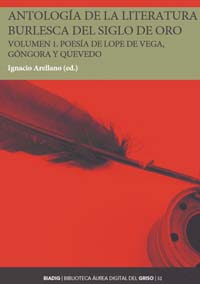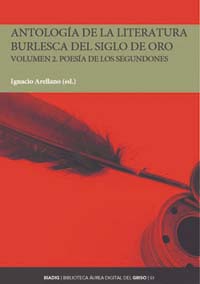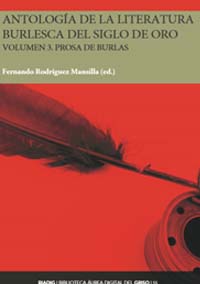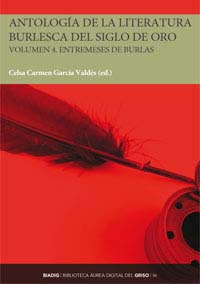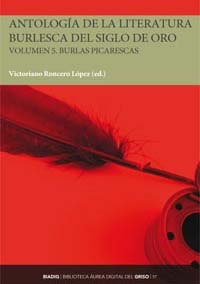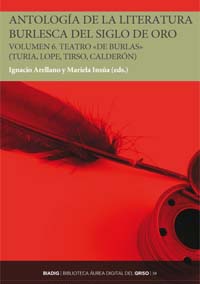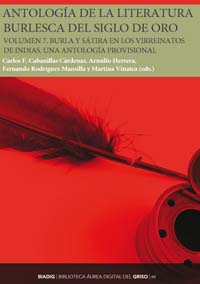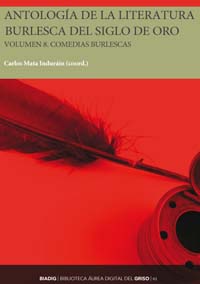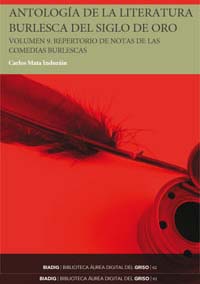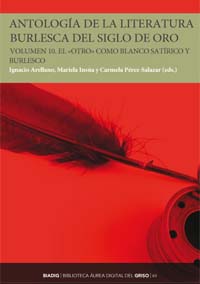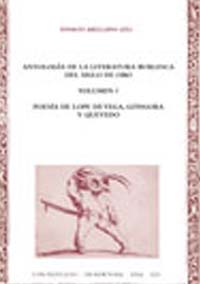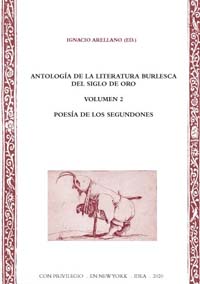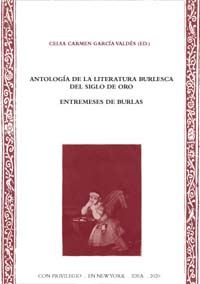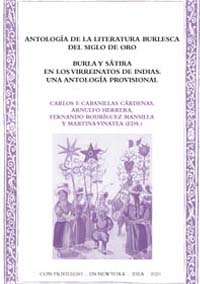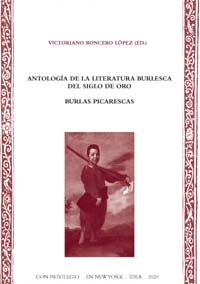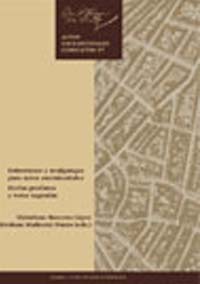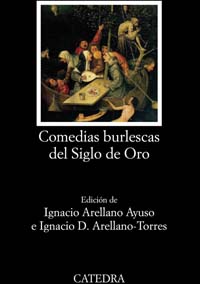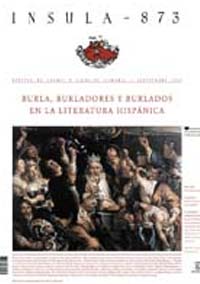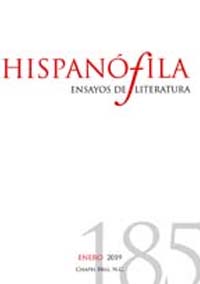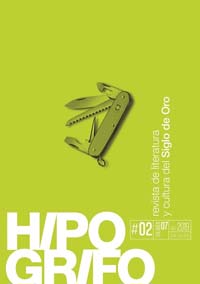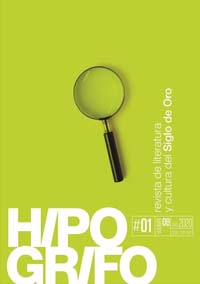FFI2017-82532-P | Ministry of Science, Innovation and Universities
The main goal of project is to study the most significant aspects of mockery in the Golden Age from the perspective of its social and cultural functions in the framework of conflicts of all kinds subject (ethnic, literary, religious, social, gender...) in which it can be used as a defensive and offensive strategy according to the conceptual axes of identity and otherness.
This goal has two fundamental ways of development: the first, a theoretical analysis corresponding to the ideas in force in the Golden Age on mockery, a concept of complicated definition, especially with regard to the limits of eutrapelia, satire and invective; the second consists of the preparation of a philological corpus of burlesque genres in the form of an essential ten-volume anthology capable of representing the main models and significant authors in this field (poetry, theater, prose by first-rank and second-rank authors; clandestine literature; specific literature attacking the "other", etc.).).
In principle, the Essential Anthology of Mockery will respond to the methodology of the critical edition of texts, with the relevant phases and disciplines of meeting of testimonies, textual study, text fixation, philological annotation... But to the usual tasks of textual criticism will be added the digital approach, with the production of versions in different electronic formats.
The edition itself will be accompanied by different programs of study on the various aspects of mockery significant in the framework of the research, with mixed perspectives: linguistic, literary, historical and anthropological, from a hypermedial and interactive approach .
PRINCIPAL INVESTIGATOR
Ignacio Arellano
iarellano@unav.es
Ismael Sánchez Bella Building
31009 Pamplona, Spain
+34 948 42 56 00 x
RESEARCHERS
![]() Carlos Fernando Cabanillas Cardenas (ITU-Norwegian Arctic University, Norway)
Carlos Fernando Cabanillas Cardenas (ITU-Norwegian Arctic University, Norway)
![]() Juan Manuel Escudero Baztán (University of La Rioja, Spain)
Juan Manuel Escudero Baztán (University of La Rioja, Spain)
![]() Celsa Carmen García Valdés (Associate Member of GRISO, Spain)
Celsa Carmen García Valdés (Associate Member of GRISO, Spain)
![]() Julián González Barrera (University of Seville, Spain)
Julián González Barrera (University of Seville, Spain)
![]() Arnulfo Herrera Curiel (National Autonomous University of Mexico, Mexico)
Arnulfo Herrera Curiel (National Autonomous University of Mexico, Mexico)
![]() Mariela Insúa Cereceda (University of Navarra, GRISO, Spain)
Mariela Insúa Cereceda (University of Navarra, GRISO, Spain)
![]() Emmanuel Marigno Vazquez (Université de Lyon / Saint-Etienne, France)
Emmanuel Marigno Vazquez (Université de Lyon / Saint-Etienne, France)
![]() Carlos Mata Induráin (University of Navarra, GRISO, Spain)
Carlos Mata Induráin (University of Navarra, GRISO, Spain)
![]() Carmela Pérez-Salazar Resano (University of Navarra, GRISO, Spain)
Carmela Pérez-Salazar Resano (University of Navarra, GRISO, Spain)
![]() Fernando Rodríguez Mansilla (Hobart and William Smith Colleges, United States)
Fernando Rodríguez Mansilla (Hobart and William Smith Colleges, United States)
![]() Victoriano Roncero López (Stony Brook University, United States)
Victoriano Roncero López (Stony Brook University, United States)
![]() Martina Vinatea Recoba (Universidad del Pacífico, Peru)
Martina Vinatea Recoba (Universidad del Pacífico, Peru)
|
|
|
|
|
Ignacio Arellano (ed.), Antología de la literatura burlesca del Siglo de Oro. Issue Poesía de Lope de Vega, Góngora y Quevedo, Pamplona, Publishing Services de la Universidad de Navarra, 2019. BIADIG Collection (Library Services Áurea Digital), 52 / GRISO Digital Publications. ISBN: 978-84-8081-645-8 |
Ignacio Arellano (ed.), Antología de la literatura burlesca del Siglo de Oro. Issue Poesía de los segundones, Pamplona, Publishing Services de la Universidad de Navarra, 2019. BIADIG Collection (Library Services Áurea Digital), 53 / GRISO Digital Publications. ISBN: 978-84-8081-657-1 |
Fernando Rodríguez Mansilla (ed.), Antología de la literatura burlesca del Siglo de Oro. Issue Prosa de burlas, Pamplona, Publishing Services de la Universidad de Navarra, 2020. BIADIG Collection (Library Services Áurea Digital), 55 / GRISO Digital Publications. ISBN: 978-84-8081-675-5 |
|
|
|
|
|
Celsa Carmen García Valdés (ed.), Antología de la literatura burlesca del Siglo de Oro. Issue Entremeses de burlas, Pamplona, Publishing Services de la Universidad de Navarra, 2020. BIADIG Collection (Library Services Áurea Digital), 56 / GRISO Digital Publications. ISBN: 978-84-8081-677-9. |
Victoriano Roncero López (ed.), Antología de la literatura burlesca del Siglo de Oro. Issue Burlas picarescas, Pamplona, Publishing Services de la Universidad de Navarra, 2020. BIADIG Collection (Library Services Áurea Digital), 58 / GRISO Digital Publications. ISBN: 978-84-8081-678-6. |
Ignacio Arellano and Mariela Insúa (eds.), Antología de la literatura burlesca del Siglo de Oro. Issue Comedias "de burlas", Pamplona, Publishing Services de la Universidad de Navarra, 2020. BIADIG Collection (Library Services Áurea Digital), 58 / GRISO Digital Publications. ISBN: 78-84-8081-686-1. |
|
|
|
|
|
Carlos F. Cabanillas Cárdenas, Arnulfo Herrera, Fernando Rodríguez Mansilla and Martina Vinatea (eds.), Antología de la literatura burlesca del Siglo de Oro. Issue Burla y sátira en los virreinatos de Indias. Una antología provisional, Pamplona, Publishing Services de la Universidad de Navarra, 2020. BIADIG Collection (Library Services Áurea Digital), 60/ GRISO Digital Publications. ISBN: 978-84-8081-688-5. |
Carlos Mata Induráin (coord.), Antología de la literatura burlesca del Siglo de Oro. Issue Comedias burlescas, Pamplona, Publishing Services de la Universidad de Navarra, 2020. BIADIG Collection (Library Services Áurea Digital), 61 / GRISO Digital Publications. ISBN: 978-84-8081-692-2. |
Carlos Mata Induráin, Antología de la literatura burlesca del Siglo de Oro. Issue Repertorio de notas de las comedias burlescas, Pamplona, Publishing Services de la Universidad de Navarra, 2020. BIADIG Collection (Library Services Áurea Digital), 62 / GRISO Digital Publications. ISBN: 978-84-8081-693-9. |
|
|
|
|
|
Ignacio Arellano, Mariela Insúa and Carmela Pérez-Salazar (eds.), Antología de la literatura burlesca del Siglo de Oro. Issue El "otro" como blanco satírico y burlesco, Pamplona, Publishing Services de la Universidad de Navarra, 2020. BIADIG Collection (Library Services Áurea Digital), 63 / GRISO Digital Publications. ISBN: 978-84-8081-695-3 |
Ignacio Arellano (ed.), Antología de la literatura burlesca del Siglo de Oro. Issue Poesía de Lope de Vega, Góngora y Quevedo, New York, IDEA, 2020. ISBN: 978-1-938795-65-7 |
Ignacio Arellano (ed.), Antología de la literatura burlesca del Siglo de Oro. Issue Poesía de los segundones, New York, IDEA, 2020. ISBN: 978-1-938795-77-0 |
|
|
|
|
|
Celsa Carmen García Valdés (ed.), Antología de la literatura burlesca del Siglo de Oro. Entremeses de burlas, New York, IDEA, 2020. ISBN: 978-1-938795-70-1 |
Carlos F. Cabanillas Cárdenas, Arnulfo Herrera, Fernando Rodríguez Mansilla and Martina Vinatea (eds.), Antología de la literatura burlesca del Siglo de Oro, Burla y sátira en los virreinatos de Indias. Una antología provisional, New York, IDEA, 2020. ISBN: 978-1-938795-71-8 |
Victoriano Roncero López (ed.), Antología de la literatura burlesca del Siglo de Oro. Burlas picarescas, New York, IDEA, 2020. ISBN: 978-1-938795-73-2 |
|
|
|
|
|
Pedro Calderón de la Barca, Entremeses y mojigangas para autos sacramentales. Burlas profanas y veras sagradas, ed. Victoriano Roncero López and Abraham Madroñal Durán, Kassel, Edition Reichenberger, 2020. ISBN: 978-3-967280-04-3 |
Comedias burlescas del Siglo de Oro, ed. Ignacio Arellano Ayuso and Ignacio D. Arellano Torres, Madrid, Chair, 2020. Letras Hispánicas" Collection, 832. ISBN: 978-84-376-4127-0 |
|
|
|
|
|
|
"Burla, burladores y burlados en la literatura hispánica", coord. Ignacio Arellano, Ínsula. Revista de letras y ciencias humanas, 873, 2019. |
"Burlas y veras en el Siglo de Oro. Teorías y prácticas", coord. Ignacio Arellano, Hispanófila, 185, 2019. |
"Silva de varia lección burlesca", coord. Carlos Mata Induráin, Hipogrifo. Revista de literatura y cultura del Siglo de Oro, 7.2, 2019. |
|
|
|
|
|
"Agents and victims: mockery, laughter and satire in the Golden Age", coord. Mariela Insúa, Romance Notes, 59.2, 2019. |
"Burla y sátira en tiempo de los Austrias", coord. Carlos Mata Induráin, Hipogrifo. Revista de literatura y cultura del Siglo de Oro, 8.1, 2020. |
|
Only the production of the team members specifically related to mockery in the Golden Age during the period of project is included.
![]() Arellano, Ignacio, "Introduction. Mockery and truth in the Golden Age. Theories and practices", Hispanophile, 185, 2019, pp. 5-9.
Arellano, Ignacio, "Introduction. Mockery and truth in the Golden Age. Theories and practices", Hispanophile, 185, 2019, pp. 5-9.
![]() Arellano, Ignacio, "Patriarchal mockery or Cupid's mockery? Patriarchal power and feminist rebellion in Calderón's No mockery with love.", Hispanophile, 185, 2019, pp. 11-22.
Arellano, Ignacio, "Patriarchal mockery or Cupid's mockery? Patriarchal power and feminist rebellion in Calderón's No mockery with love.", Hispanophile, 185, 2019, pp. 11-22.
![]() Arellano, Ignacio, "Burla, risa, sátira: un panorama de múltiples caras", Ínsula. Journal of Letters and Human Sciences, 873, 2019, p. 2.
Arellano, Ignacio, "Burla, risa, sátira: un panorama de múltiples caras", Ínsula. Journal of Letters and Human Sciences, 873, 2019, p. 2.
![]() Arellano, Ignacio, "Burlas y veras en Historia de las cuevas de Salamanca by Francisco Botello de Moraes."in Francisco Botelho de Morais e Vasconcelos (1670-1747) e as letras ibéricas do seu tempo/Francisco Botelho de Morais e Vasconcelos (1670-1747) and the Iberian letters of his timeAntónio Apolinário Lourenço, Carlos d'Abreu and Mariela Insúa, ed. António Apolinário Lourenço, Carlos d'Abreu and Mariela Insúa, New York, IDEA, 2019, pp. 31-54.
Arellano, Ignacio, "Burlas y veras en Historia de las cuevas de Salamanca by Francisco Botello de Moraes."in Francisco Botelho de Morais e Vasconcelos (1670-1747) e as letras ibéricas do seu tempo/Francisco Botelho de Morais e Vasconcelos (1670-1747) and the Iberian letters of his timeAntónio Apolinário Lourenço, Carlos d'Abreu and Mariela Insúa, ed. António Apolinário Lourenço, Carlos d'Abreu and Mariela Insúa, New York, IDEA, 2019, pp. 31-54.
![]() Arellano, Ignacio, "La estructura de la burla en el teatro de Cervantes", Cervantes, a man of the theaterAurelio González and Nieves Rodríguez Valle, Mexico, El high school de México, 2019, pp. 95-114.
Arellano, Ignacio, "La estructura de la burla en el teatro de Cervantes", Cervantes, a man of the theaterAurelio González and Nieves Rodríguez Valle, Mexico, El high school de México, 2019, pp. 95-114.
![]() Arellano, Ignacio, "Bulls and reeds in Quevedo's poetry. Between mockery and truth", eHumanista, 45, 2020, pp. 51-66.
Arellano, Ignacio, "Bulls and reeds in Quevedo's poetry. Between mockery and truth", eHumanista, 45, 2020, pp. 51-66.
![]() Arellano, Ignacio, "Mockers, mockers, mocked and burlesque in the Golden Age", Revue Romane, 56.1, 2021, pp. 1-5
Arellano, Ignacio, "Mockers, mockers, mocked and burlesque in the Golden Age", Revue Romane, 56.1, 2021, pp. 1-5
![]() Arellano, Ignacio, "Mockery and magic in La cueva de Salamanca: subversion or fun?", Revue Romane56.1, 2021, pp. 6-18.
Arellano, Ignacio, "Mockery and magic in La cueva de Salamanca: subversion or fun?", Revue Romane56.1, 2021, pp. 6-18.
![]() Cabanillas, Carlos, "The micro-context of the galleys in Quevedo's jácara "Vida y milagros de Montilla".", La Perinola. Magazine of research Quevediana, 23, 2019, pp. 231-250.
Cabanillas, Carlos, "The micro-context of the galleys in Quevedo's jácara "Vida y milagros de Montilla".", La Perinola. Magazine of research Quevediana, 23, 2019, pp. 231-250.
![]() Cabanillas, Carlos, "Marginalised in colonial burlesque poetry. Mulattos in the caste poems of Juan del Valle y Caviedes", Revue Romane, 2019. https://doi.org/10.1075/rro.18031.cab
Cabanillas, Carlos, "Marginalised in colonial burlesque poetry. Mulattos in the caste poems of Juan del Valle y Caviedes", Revue Romane, 2019. https://doi.org/10.1075/rro.18031.cab
![]() Escudero, Juan Manuel, "Towards a typology of compositional levels in Calderonian mojigangas", Hispanophile, 185, 2019, pp. 59-71.
Escudero, Juan Manuel, "Towards a typology of compositional levels in Calderonian mojigangas", Hispanophile, 185, 2019, pp. 59-71.
![]() Escudero, Juan Manuel, "The myth of Venus and Adonis under the deforming prism of Castillo Solórzano", Revue Romane56.1, 2021, pp. 39-54.
Escudero, Juan Manuel, "The myth of Venus and Adonis under the deforming prism of Castillo Solórzano", Revue Romane56.1, 2021, pp. 39-54.
![]() García Valdés, Celsa, "From Nebrija to Quevedo: life and fortune of the term figura"., La Perinola, 22, 2018, pp. 107-140.
García Valdés, Celsa, "From Nebrija to Quevedo: life and fortune of the term figura"., La Perinola, 22, 2018, pp. 107-140.
![]() García Valdés, Celsa "Misogyny or tradition? Women in Quevedo's work". The Perinola, 23, 2019, pp. 331-349.
García Valdés, Celsa "Misogyny or tradition? Women in Quevedo's work". The Perinola, 23, 2019, pp. 331-349.
![]() García Valdés, Celsa, "Laughter codes in Sor Juana Inés de la Cruz's theatrical celebrations", The writing of the American territoryCarlos Mata Induráin, Antonio Sánchez Jiménez and Martina Vinatea, New York, IDEA, 2019, pp. 89-104.
García Valdés, Celsa, "Laughter codes in Sor Juana Inés de la Cruz's theatrical celebrations", The writing of the American territoryCarlos Mata Induráin, Antonio Sánchez Jiménez and Martina Vinatea, New York, IDEA, 2019, pp. 89-104.
![]() García Valdés, Celsa, "The protagonist of the mockery in the Spanish medieval and renaissance tradition: from Yohá to Pedro de Urdemalas", Romance Notes 59.2, 2019, pp. 235-246.
García Valdés, Celsa, "The protagonist of the mockery in the Spanish medieval and renaissance tradition: from Yohá to Pedro de Urdemalas", Romance Notes 59.2, 2019, pp. 235-246.
![]() García Valdés, Celsa, "Laughter codes in Sor Juana Inés de la Cruz's theatrical celebrations", The writing of the American territoryCarlos Mata Induráin, Antonio Sánchez Jiménez and Martina Vinatea, New York, IDEA, 2019, pp. 89-104.
García Valdés, Celsa, "Laughter codes in Sor Juana Inés de la Cruz's theatrical celebrations", The writing of the American territoryCarlos Mata Induráin, Antonio Sánchez Jiménez and Martina Vinatea, New York, IDEA, 2019, pp. 89-104.
![]() González Barrera, Julián, "A new lady for the golden age theater: the eroticism of Belisa in El acero de Madrid", Hispanófila, 185, 2019, pp. 73-86.
González Barrera, Julián, "A new lady for the golden age theater: the eroticism of Belisa in El acero de Madrid", Hispanófila, 185, 2019, pp. 73-86.
![]() González Barrera, Julián, "The capitis deminutioof a king. Exegesis of a satirical sonnet by the Count of Villamediana.", Revue Romane56.1, 2021, pp. 55-75.
González Barrera, Julián, "The capitis deminutioof a king. Exegesis of a satirical sonnet by the Count of Villamediana.", Revue Romane56.1, 2021, pp. 55-75.
![]() Herrera, Arnulfo, "About a satirical letrilla by Góngora", Romance Notes, 59.2, 2019, pp. 247-258.
Herrera, Arnulfo, "About a satirical letrilla by Góngora", Romance Notes, 59.2, 2019, pp. 247-258.
![]() Insúa, Mariela, "La representación de la falsa beatería: del Siglo de Oro a Virtud al uso y mística a la moda " (1729) by Fulgencio Afán de Ribera.", Anejos de Dieciocho, 5, Spring 2019, pp. 127-140.
Insúa, Mariela, "La representación de la falsa beatería: del Siglo de Oro a Virtud al uso y mística a la moda " (1729) by Fulgencio Afán de Ribera.", Anejos de Dieciocho, 5, Spring 2019, pp. 127-140.
![]() Insúa, Mariela, "Laughter and mockery in Antonio López de Vega's Heraclitus and Democritus of our century .", Romance Notes, 59.2, 2019, pp. 259-271.
Insúa, Mariela, "Laughter and mockery in Antonio López de Vega's Heraclitus and Democritus of our century .", Romance Notes, 59.2, 2019, pp. 259-271.
![]() Insúa, Mariela, "Some coves in laughter and weeping. Democritus and Heraclitus, from the Golden Age to Fernández de Lizardi", in Baroque of both worlds. Views from PueblaIgnacio Arellano and Robin Ann Rice, New York, IDEA, 2019, pp. 137-156.
Insúa, Mariela, "Some coves in laughter and weeping. Democritus and Heraclitus, from the Golden Age to Fernández de Lizardi", in Baroque of both worlds. Views from PueblaIgnacio Arellano and Robin Ann Rice, New York, IDEA, 2019, pp. 137-156.
![]() Marigno, Emmanuel, "The visual resources of mockery in Cervantes. Towards a modern representation of the image", Hypogriff. Journal of Literature and Culture of the Golden Age, 7.2, 2019, pp. 85-96.
Marigno, Emmanuel, "The visual resources of mockery in Cervantes. Towards a modern representation of the image", Hypogriff. Journal of Literature and Culture of the Golden Age, 7.2, 2019, pp. 85-96.
![]() Marigno, Emmanuel, "From curiosity as mockery to the mockery of curiosity. The figure of the "monster" in the time of the Austrias (1563-1700).", Revue Romane56.1, 2021, pp. 96-110.
Marigno, Emmanuel, "From curiosity as mockery to the mockery of curiosity. The figure of the "monster" in the time of the Austrias (1563-1700).", Revue Romane56.1, 2021, pp. 96-110.
![]() Mata Induráin, Carlos, "La campana de descasar, entremés de José Joaquín Benegasi y Luján: commentary and annotated edition.", Hypogriff. Journal of Literature and Culture of the Golden Age, 6.2, 2018, pp. 639-655.
Mata Induráin, Carlos, "La campana de descasar, entremés de José Joaquín Benegasi y Luján: commentary and annotated edition.", Hypogriff. Journal of Literature and Culture of the Golden Age, 6.2, 2018, pp. 639-655.
![]() Mata Induráin, Carlos, ""Diome Apolo mi destino / para lo jocoso solo": la poesía festiva de José Joaquín Benegasi y Luján", in Alain Bègue and Carlos Mata Induráin (eds.), Towards Modernity. The construction of a new literary theoretical order between Baroque and Neoclassicism., Vigo, publishing house Academia del Hispanismo, 2018, pp. 97-109.
Mata Induráin, Carlos, ""Diome Apolo mi destino / para lo jocoso solo": la poesía festiva de José Joaquín Benegasi y Luján", in Alain Bègue and Carlos Mata Induráin (eds.), Towards Modernity. The construction of a new literary theoretical order between Baroque and Neoclassicism., Vigo, publishing house Academia del Hispanismo, 2018, pp. 97-109.
![]() Mata Induráin, Carlos, "From Lisbon to the Netherlands: Manuel (Jacob) de Pina, Sephardic poet and playwright, and his songbook of mockeries Chanzas del ingenio y dislates de la musa (1656)."in Rafaèle Audoubert, Aurélie Griffin and Morgane Kappès-Le Moing (eds.), Exile poetry in Europe in the XVI and XVII centuries, New York, high school of programs of study Aurisecular (IDEA), 2018, pp. 61-113.
Mata Induráin, Carlos, "From Lisbon to the Netherlands: Manuel (Jacob) de Pina, Sephardic poet and playwright, and his songbook of mockeries Chanzas del ingenio y dislates de la musa (1656)."in Rafaèle Audoubert, Aurélie Griffin and Morgane Kappès-Le Moing (eds.), Exile poetry in Europe in the XVI and XVII centuries, New York, high school of programs of study Aurisecular (IDEA), 2018, pp. 61-113.
![]() Mata Induráin, Carlos, "La parodia de la descriptio puellae in the Quixote: some examples", Ínsula. Journal of Letters and Human Sciences, 873, 2019, pp. 17-19.
Mata Induráin, Carlos, "La parodia de la descriptio puellae in the Quixote: some examples", Ínsula. Journal of Letters and Human Sciences, 873, 2019, pp. 17-19.
![]() Mata Induráin, Carlos, "Muertes ridículas y muertos resucitados en la comedia burlesca del Siglo de Oro", in José María Díez Borque and Elena Di Pinto (dirs.), Elena Di Pinto (ed.), Crime and death in the theater of the Spanish Golden Age, Madrid, Visor Libros, 2019, pp. 107-133.
Mata Induráin, Carlos, "Muertes ridículas y muertos resucitados en la comedia burlesca del Siglo de Oro", in José María Díez Borque and Elena Di Pinto (dirs.), Elena Di Pinto (ed.), Crime and death in the theater of the Spanish Golden Age, Madrid, Visor Libros, 2019, pp. 107-133.
![]() Mata Induráin, Carlos, "An approach to satirical-burlesque poetry in colonial Chile.", Romance Notes, 59.2, 2019, pp. 283-297.
Mata Induráin, Carlos, "An approach to satirical-burlesque poetry in colonial Chile.", Romance Notes, 59.2, 2019, pp. 283-297.
![]() Mata Induráin, Carlos, "Theater and mockery in José Joaquín Benegasi y Luján (1707-1770): notice of his short dramatic pieces and annotated edition of El tiro a la Discreción.", Notebooks on Enlightenment and Romanticism, 25, 2019, pp. 221-249.
Mata Induráin, Carlos, "Theater and mockery in José Joaquín Benegasi y Luján (1707-1770): notice of his short dramatic pieces and annotated edition of El tiro a la Discreción.", Notebooks on Enlightenment and Romanticism, 25, 2019, pp. 221-249.
![]() Mata Induráin, Carlos, "Don Quixote as a dramatic character in the Spanish theater of the 18th and 19th centuries", Anagnórisis. Magazine of research theatrical, 20, December 2019, pp. 56-81.
Mata Induráin, Carlos, "Don Quixote as a dramatic character in the Spanish theater of the 18th and 19th centuries", Anagnórisis. Magazine of research theatrical, 20, December 2019, pp. 56-81.
![]() Mata Induráin, Carlos, "La teoría del Quixote como sistema de juegos o el cervantismo lúdico de Gonzalo Torrente Ballester (1910-1999)", in José Ángel Ascunce and Alberto Rodríguez (eds.), Cervantine payroll. 20th Century, 2, Kassel, Edition Reichenberger, 2019, pp. 149-180.
Mata Induráin, Carlos, "La teoría del Quixote como sistema de juegos o el cervantismo lúdico de Gonzalo Torrente Ballester (1910-1999)", in José Ángel Ascunce and Alberto Rodríguez (eds.), Cervantine payroll. 20th Century, 2, Kassel, Edition Reichenberger, 2019, pp. 149-180.
![]() Mata Induráin, Carlos, ""Está para los poetas / el tiempo no regular": estudio y edición anotada del Papillote danceby José Joaquín Benegasi y Luján", in Ramón González, Inés Olza and Óscar Loureda (eds.), language, culture, speech. programs of study offered to Prof. Manuel Casado, Pamplona, Eunsa, 2019, pp. 1229-1250.
Mata Induráin, Carlos, ""Está para los poetas / el tiempo no regular": estudio y edición anotada del Papillote danceby José Joaquín Benegasi y Luján", in Ramón González, Inés Olza and Óscar Loureda (eds.), language, culture, speech. programs of study offered to Prof. Manuel Casado, Pamplona, Eunsa, 2019, pp. 1229-1250.
![]() Mata Induráin, Carlos, "Mockery, theatricality and violence in two episodes of the Second Part of Don Quixote (the chariot of the Cortes de la Muerte and the altarpiece of Maese Pedro).", eHumanista/Cervantes8, 2020, pp. 100-114.
Mata Induráin, Carlos, "Mockery, theatricality and violence in two episodes of the Second Part of Don Quixote (the chariot of the Cortes de la Muerte and the altarpiece of Maese Pedro).", eHumanista/Cervantes8, 2020, pp. 100-114.
![]() Mata Induráin, Carlos, "Notas sobre os subgêneros do teatro breve espanhol do Século de Ouro", in Miguel Ángel Zamorano (coord.), Teatro breve do Século de Ouro, São Paulo, Editora Perspectiva, 2020, pp. 265-276.
Mata Induráin, Carlos, "Notas sobre os subgêneros do teatro breve espanhol do Século de Ouro", in Miguel Ángel Zamorano (coord.), Teatro breve do Século de Ouro, São Paulo, Editora Perspectiva, 2020, pp. 265-276.
![]() Mata Induráin, Carlos, """We are today in a century/fatal for the discreet". Study and edition of El ingenio apurado, baile entremesado by José Joaquín de Benegasi y Luján.", Revue Romane56.1, 2021, pp. 76-95.
Mata Induráin, Carlos, """We are today in a century/fatal for the discreet". Study and edition of El ingenio apurado, baile entremesado by José Joaquín de Benegasi y Luján.", Revue Romane56.1, 2021, pp. 76-95.
![]() Mata Induráin, Carlos, "An approach to the burlesque poetry of Manuel de Pina: an annotated edition of the "Fábula burlesca de Júpiter y Europa."", bulletin from Philology56.1, 2021, pp. 669-683.
Mata Induráin, Carlos, "An approach to the burlesque poetry of Manuel de Pina: an annotated edition of the "Fábula burlesca de Júpiter y Europa."", bulletin from Philology56.1, 2021, pp. 669-683.
![]() Pérez-Salazar, Carmela, "Burlas (y veras) en la fraseología española del Siglo de Oro: el Vocabulary of proverbial sayings and phrases de Gonzalo Correas", language, cultura, speech. programs of study offered to Professor Manuel Casado Velarde, Pamplona, Eunsa, 2019, pp. 763-780.
Pérez-Salazar, Carmela, "Burlas (y veras) en la fraseología española del Siglo de Oro: el Vocabulary of proverbial sayings and phrases de Gonzalo Correas", language, cultura, speech. programs of study offered to Professor Manuel Casado Velarde, Pamplona, Eunsa, 2019, pp. 763-780.
![]() Rodríguez Mansilla, Fernando, "El hidalgo pobre en la poesía satírico-burlesca de Alonso de Castillo Solórzano". Calliope. Journal of the Society for Renaissance and Baroque Hispanic Poetry 24.1, 2019, pp. 78-100.
Rodríguez Mansilla, Fernando, "El hidalgo pobre en la poesía satírico-burlesca de Alonso de Castillo Solórzano". Calliope. Journal of the Society for Renaissance and Baroque Hispanic Poetry 24.1, 2019, pp. 78-100.
![]() Rodríguez Mansilla, Fernando, "Quevedo and the programs of study of animals: a reading of Consultation of cats (no. 750).". La Perinola. Magazine of research quevediana 23, 2019, pp. 239-259.
Rodríguez Mansilla, Fernando, "Quevedo and the programs of study of animals: a reading of Consultation of cats (no. 750).". La Perinola. Magazine of research quevediana 23, 2019, pp. 239-259.
![]() Rodríguez Mansilla, Fernando, "The mockery in the comedy of saints: fray Junípero in El serafín humano.", Hispanophile, 185, 2019, pp. 101-113.
Rodríguez Mansilla, Fernando, "The mockery in the comedy of saints: fray Junípero in El serafín humano.", Hispanophile, 185, 2019, pp. 101-113.
![]() Rodríguez Mansilla, Fernando, "For the text of La dama boba: the delivery of the cat as a burlesque topic", Hipogrifo. Journal of culture and literature of the Golden Age.8.1, 2020, pp. 161-173.
Rodríguez Mansilla, Fernando, "For the text of La dama boba: the delivery of the cat as a burlesque topic", Hipogrifo. Journal of culture and literature of the Golden Age.8.1, 2020, pp. 161-173.
![]() Rodríguez Mansilla, Fernando, "Animal theatricality in Don Quixote", eHumanista/Cervantes8, 2020, pp. 84-99.
Rodríguez Mansilla, Fernando, "Animal theatricality in Don Quixote", eHumanista/Cervantes8, 2020, pp. 84-99.
![]() Rodríguez Mansilla, Fernando, "Mockery and laughter in El celoso hasta la muerte by Alonso de Castillo Solórzano", Revue Romane56.1, 2021, pp. 111-124.
Rodríguez Mansilla, Fernando, "Mockery and laughter in El celoso hasta la muerte by Alonso de Castillo Solórzano", Revue Romane56.1, 2021, pp. 111-124.
![]() Rodríguez Mansilla, Fernando, "The Punishment of Misery as a Novel of Mockery".in Traces, wit and grace. programs of study on María de Zayas and her "Novelas amorosas y ejemplares", ed. Javier Espejo Surós and Carlos Mata Induráin, Pamplona, Publishing Services of the University of Navarra, 2021, pp. 317-335.
Rodríguez Mansilla, Fernando, "The Punishment of Misery as a Novel of Mockery".in Traces, wit and grace. programs of study on María de Zayas and her "Novelas amorosas y ejemplares", ed. Javier Espejo Surós and Carlos Mata Induráin, Pamplona, Publishing Services of the University of Navarra, 2021, pp. 317-335.
![]() Roncero, Victoriano, ""Han muerto a vuestro marido": bufones asesinos y asesinados", in "Doctos libros juntos". Tribute to Professor Ignacio Arellano Ayuso, Victoriano Roncero López and Juan Manuel Escudero Baztán, eds., Madrid/Frankfurt, Iberoamericana/Vervuert, 2018, pp. 451-467.
Roncero, Victoriano, ""Han muerto a vuestro marido": bufones asesinos y asesinados", in "Doctos libros juntos". Tribute to Professor Ignacio Arellano Ayuso, Victoriano Roncero López and Juan Manuel Escudero Baztán, eds., Madrid/Frankfurt, Iberoamericana/Vervuert, 2018, pp. 451-467.
![]() Roncero, Victoriano, "Tragicomic killers", in La time of the assassins: a black chronicle of the Golden AgeIgnacio Arellano and Gonzalo Santonja Gómez-Agero, eds, New York, IDEA, 2018, pp. 119-125.
Roncero, Victoriano, "Tragicomic killers", in La time of the assassins: a black chronicle of the Golden AgeIgnacio Arellano and Gonzalo Santonja Gómez-Agero, eds, New York, IDEA, 2018, pp. 119-125.
![]() Roncero, Victoriano, "The preaching of a jester: "At the feet of Fortune". Romance by Quevedo to Don Álvaro de Luna"., La Perinola, 23, 2019, pp. 151-180.
Roncero, Victoriano, "The preaching of a jester: "At the feet of Fortune". Romance by Quevedo to Don Álvaro de Luna"., La Perinola, 23, 2019, pp. 151-180.
![]() Roncero, Victoriano, "The structure of the mockery in three Calderonian entremeses", Romance Notes, 59.2, 2019, pp. 313-326.
Roncero, Victoriano, "The structure of the mockery in three Calderonian entremeses", Romance Notes, 59.2, 2019, pp. 313-326.
![]() Roncero, Victoriano, "'Vice gets attached': Guzman's father", in Baroque of both worlds. Views from PueblaIgnacio Arellano and Robin Ann Rice, eds, New York, IDEA, 2019, pp. 285-297.
Roncero, Victoriano, "'Vice gets attached': Guzman's father", in Baroque of both worlds. Views from PueblaIgnacio Arellano and Robin Ann Rice, eds, New York, IDEA, 2019, pp. 285-297.
![]() Roncero, Victoriano, "The "festive ancestry" of La pícara Justina: genealogical mockery", Revue Romane, 56.1, 2021, pp. 125-140.
Roncero, Victoriano, "The "festive ancestry" of La pícara Justina: genealogical mockery", Revue Romane, 56.1, 2021, pp. 125-140.
![]() Vinatea, Martina, "Lima or la limeña por dentro y por fuera? Burlesque chorography in an eighteenth-century poem", Ínsula. Journal of Letters and Human Sciences, 873, 2019, pp. 31-33.
Vinatea, Martina, "Lima or la limeña por dentro y por fuera? Burlesque chorography in an eighteenth-century poem", Ínsula. Journal of Letters and Human Sciences, 873, 2019, pp. 31-33.
![]() Vinatea, Martina, "The thrice-crowned villa: from the myth of the paradise city to the rotten city", Hipogrifo. Journal of literature and culture of the Golden Age, 7.2, 2019, pp. 283-300.
Vinatea, Martina, "The thrice-crowned villa: from the myth of the paradise city to the rotten city", Hipogrifo. Journal of literature and culture of the Golden Age, 7.2, 2019, pp. 283-300.
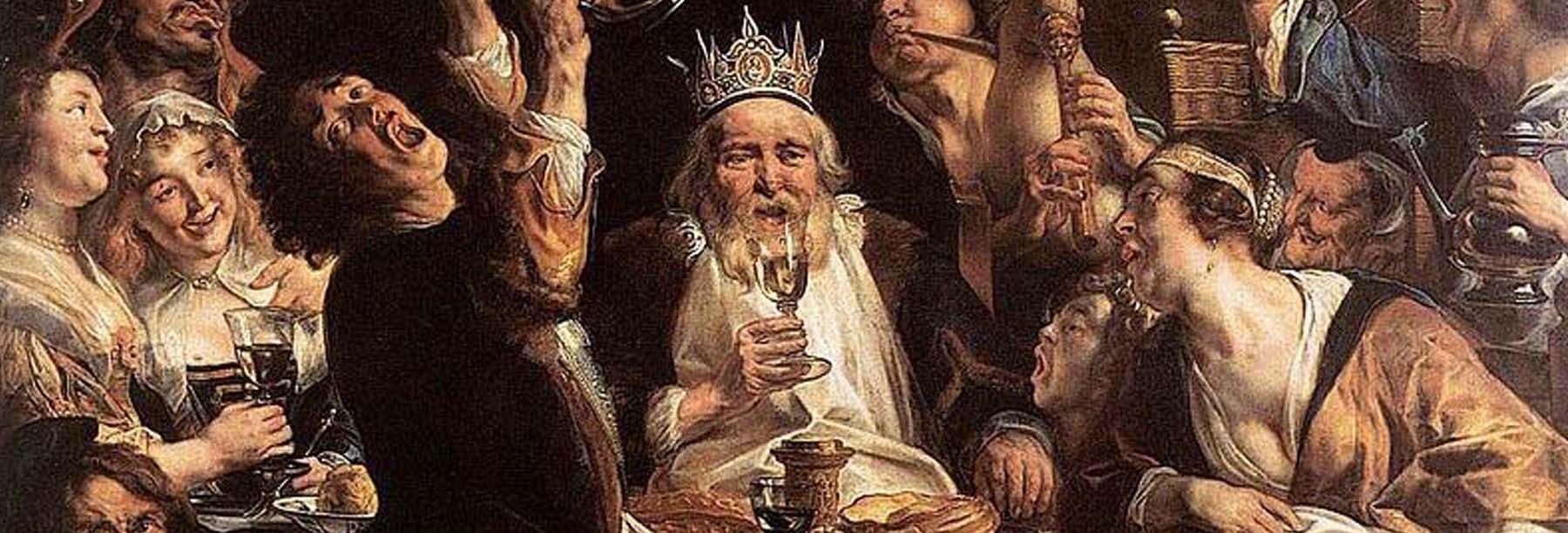
![]() congress International "Taunts, mockers and mocked in Cervantes" (modality virtual)organized by GRISO-University of Navarra with the partnership of the high school of programs of study Auriseculares (IDEA), Pamplona, University of Navarra, December 17-18, 2020. [Call for applications] [Poster]
congress International "Taunts, mockers and mocked in Cervantes" (modality virtual)organized by GRISO-University of Navarra with the partnership of the high school of programs of study Auriseculares (IDEA), Pamplona, University of Navarra, December 17-18, 2020. [Call for applications] [Poster]
![]() International Workshop "Editing the mockery of the Golden Age".organized by the project "Identidades y alteridades. La burla como diversión y arma social en la literatura y cultura del Siglo de Oro" (FFI2017-82532-P, MICINN/AEI/FEDER, EU), Pamplona, University of Navarra, September 7-8, 2020. (modality virtual) [Program]
International Workshop "Editing the mockery of the Golden Age".organized by the project "Identidades y alteridades. La burla como diversión y arma social en la literatura y cultura del Siglo de Oro" (FFI2017-82532-P, MICINN/AEI/FEDER, EU), Pamplona, University of Navarra, September 7-8, 2020. (modality virtual) [Program]
![]() congress International "Cervantes, between mockery and truth".organized by GRISO-University of Navarra with the partnership of the high school of programs of study Auriseculares (IDEA), Pamplona, University of Navarra, December 16-17, 2019.
congress International "Cervantes, between mockery and truth".organized by GRISO-University of Navarra with the partnership of the high school of programs of study Auriseculares (IDEA), Pamplona, University of Navarra, December 16-17, 2019.
![]() congress International "Mockery and satire. Carnival spaces in Hispanic literature, from the Habsburgs to the Bourbons (17th and 18th centuries)".organized by the group de programs of study del Siglo XVIII (GESXVIII) of the University of Cadiz and the group de research Siglo de Oro (GRISO) of the University of Navarra, Cadiz (Spain), University of Cadiz, January 30-February 1, 2019. [Call for applications] [Program] [Poster]
congress International "Mockery and satire. Carnival spaces in Hispanic literature, from the Habsburgs to the Bourbons (17th and 18th centuries)".organized by the group de programs of study del Siglo XVIII (GESXVIII) of the University of Cadiz and the group de research Siglo de Oro (GRISO) of the University of Navarra, Cadiz (Spain), University of Cadiz, January 30-February 1, 2019. [Call for applications] [Program] [Poster]
![]() congress International "Cervantes and mockery in the Golden Age"., organized by GRISO-University of Navarra with the partnership of the high school of programs of study Auriseculares (IDEA), Pamplona, University of Navarra, December 17-18, 2018. [Poster] [Program]
congress International "Cervantes and mockery in the Golden Age"., organized by GRISO-University of Navarra with the partnership of the high school of programs of study Auriseculares (IDEA), Pamplona, University of Navarra, December 17-18, 2018. [Poster] [Program]
![]() congress Internacional "La burla del poder y de la autoridad en el Siglo de Oro" / Congresso Internacional "A troça do poder e da autoridade no "Siglo de Oro" / International Congress "The mockery of power and authority in the Golden Age" / Congresso Internacional "A troça do poder e da autoridade no "Siglo de Oro""., co-organized by GRISO-Universidad de Navarra and CITCEM-Universidade do Porto, Porto (Portugal), Universidade do Porto (Facultade de Letras), 13-14 December 2018. [Program] [Poster]
congress Internacional "La burla del poder y de la autoridad en el Siglo de Oro" / Congresso Internacional "A troça do poder e da autoridade no "Siglo de Oro" / International Congress "The mockery of power and authority in the Golden Age" / Congresso Internacional "A troça do poder e da autoridade no "Siglo de Oro""., co-organized by GRISO-Universidad de Navarra and CITCEM-Universidade do Porto, Porto (Portugal), Universidade do Porto (Facultade de Letras), 13-14 December 2018. [Program] [Poster]
![]() seminar International / International Workshop "Mockery as a strategy of struggle in the Golden Age".co-organized by GRISO-University of Navarra and State University of New York at Stony Brook, Stony Brook, New York (USA), July 18-19, 2018.
seminar International / International Workshop "Mockery as a strategy of struggle in the Golden Age".co-organized by GRISO-University of Navarra and State University of New York at Stony Brook, Stony Brook, New York (USA), July 18-19, 2018.
![]() congress International "Identities and alterities. Mockery as entertainment and social weapon in the Hispanic culture of the Golden Age".co-organized by University of North Carolina at Chapel Hill-Romance Studies Department and University of Navarra-GRISO, Chapel Hill (USA), May 16-17, 2018. [Poster] [Program]
congress International "Identities and alterities. Mockery as entertainment and social weapon in the Hispanic culture of the Golden Age".co-organized by University of North Carolina at Chapel Hill-Romance Studies Department and University of Navarra-GRISO, Chapel Hill (USA), May 16-17, 2018. [Poster] [Program]
![]() seminar International "Curious mockery and curious mockery. Curiosity and mockery in the Spanish Golden Age."organized by GRISO-University of Navarra, Pamplona (Spain), University of Navarra, April 24, 2018. [Poster] [Program]
seminar International "Curious mockery and curious mockery. Curiosity and mockery in the Spanish Golden Age."organized by GRISO-University of Navarra, Pamplona (Spain), University of Navarra, April 24, 2018. [Poster] [Program]
VIDEOS
Some victims of mockery in Golden Age literature
Ignacio Arellano
Mockery, laughter and their limits. Difficulties of eutrapelia
Ignacio Arellano
Cervantes' mockery in the comedies
Ignacio Arellano
Mockery in El burlador de Sevilla
Ignacio Arellano
The salty genius of Don Luis. The sonnets
Ignacio Arellano
Puns in the mockery of Quevedo
Ignacio Arellano
Quevedo's cultipicaña muse
Ignacio Arellano
The mockery in Cervantes' entremeses
Ignacio Arellano
The Fable of Pyramus and Thisbe by Góngora
Ignacio Arellano
La gatomaquia, burlesque poem by Lope de Vega
Ignacio Arellano
Lope de Vega's jocoseria poetry in Tomé de Burguillos' Rimas.
Ignacio Arellano
The rebelliousness of Don Juan: The Mocker of Seville
Ignacio Arellano
The violence of mockery. Mockery and laughter called popular and official.
Ignacio Arellano
Cervantes' mockery in the comedies of captivity
Ignacio Arellano
The many faces of mockery and laughter
Ignacio Arellano
The satirical and the burlesque in the Golden Age
Ignacio Arellano
Letrillas y romance de burlas de Góngora (Letrillas and mock-romance by Góngora)
Ignacio Arellano
The burlesque mechanisms of Quevedo's poetical language
Ignacio Arellano
Workshop Editing the mockery of the Golden Age, "presentation".
Carlos Mata and Ignacio Arellano
The annotation of El Vejamen de la luna by Anastasio Pantaleón de Ribera
Fernando Rodríguez Mansilla
Workshop Editing the mockery of the Golden Age
"discussion. Session 1"
The anthropological method as a new perspective on mockery: innovations and limits
Emmanuel Marigno
Women of Lima in 18th century satirical poems
Martina Vinatea
Workshop Editing the mockery of the Golden Age
"discussion. Session 2"
Workshop Editing the mockery of the Golden Age, "Refranes and locutions for mockery in the Golden Age".
Carmela Pérez-Salazar
Workshop Editing the mockery of the Golden Age, "Editar las comedias burlescas del Siglo de Oro. An almost finished project ",
Carlos Mata Induráin
Workshop Editing the mockery of the Golden Age
"discussion. Session 3"
Workshop Editing the mockery of the Golden Age, "On satirical and burlesque poetry in New Spain".
Arnulfo Herrera
Workshop "Editando la burla del Siglo de Oro", "Resultados y proyecciones del project Identidades y alteridades. Mockery as entertainment and social weapon in the literature and culture of the Golden Age".
Mariela Insúa
IMAGE CREDITS:
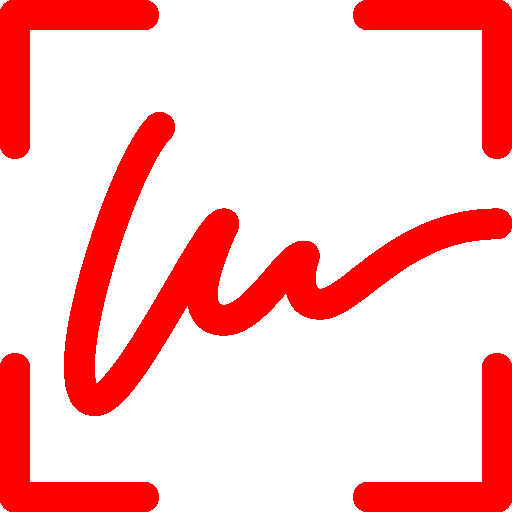
![]() Cover photo: Jan Mandijn, Burlesque feast (c. 1550), Bilbao Fine Arts Museum.
Cover photo: Jan Mandijn, Burlesque feast (c. 1550), Bilbao Fine Arts Museum.
![]() Photo from 'presentation': Johannes Moreelse, Democritus, the Laughing Philosopher (c. 1630), Centraal Museum Utrecht.
Photo from 'presentation': Johannes Moreelse, Democritus, the Laughing Philosopher (c. 1630), Centraal Museum Utrecht.
![]() Photo from 'Congresses': Jabob Jordaens, The king drinks (1640), Royal Museums of Fine Arts, Brussels.
Photo from 'Congresses': Jabob Jordaens, The king drinks (1640), Royal Museums of Fine Arts, Brussels.


